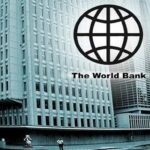Some recent media reports indicated that an institution of the World Bank Group (WBA), the International Development Association (IDA), recently declared Nigeria among Top 10 Countries considered as “high-debt risk”.
VERDICT: False. Neither Nigeria, nor the other countries listed were described as “high-debt risk” nations in the report. At best, the report indicated that Nigeria’s IDA’s $11.7 billion Debt Stock as at June 30, 2021 did not exceed the Single Borrower Limited (SBL) for member countries set at $45 billion for 2022 financial year, which was much lower during the 2021 financial year of the Institution. In fact, IDA reported that “the SBL is not currently a constraining factor” as none of the Top 10 borrowers of the institution exceeded the $45 billion cap for a single borrower in 2022.
Full Text
Recently, the IDA released its “Management’s Discussion & Analysis and Financial Statements June 30, 2021” and several media houses reported it.
Some media reports claimed that the World Bank declared Nigeria the 5th among countries considered as high debt risk.
A national newspaper reported this: “The World Bank has stated that Nigeria is among a list of top 10 countries with high debt risk exposure.
“It stated this in the financial statement for the International Development Association, which was among the World Bank FY21 audited financial statements released on Monday.”
But did the report actually indicate that Nigeria is a high debt risk nation?

About IDA
The Executive Summary of the IDA 2021 report stated that it is one of the five institutions of the World Bank Group (WBG).
“Each organization is legally and financially independent from IDA, with separate assets and liabilities, and IDA is not liable for their obligations.
With its many years of experience and its depth of knowledge in the international development arena, IDA plays a key role in achieving the WBG goal of helping countries achieve better development outcomes,” the report stated.
IDA contributes to the WBG’s twin goals of ending extreme poverty and promoting shared prosperity by providing loans, grants, and guarantees to countries to help meet their development needs and by leveraging its experience and expertise to provide technical assistance and policy advice. It also supports countries with disaster risk financing and insurance against natural disasters and health-related crises and facilitates financing through trust fund partnerships.
“IDA and its affiliated organizations seek to help countries achieve improvements in growth, job creation, poverty reduction, governance, the environment, climate adaptation and resilience, human capital, infrastructure, and debt transparency. To meet its development goals, the WBG has been increasing its focus on country programs in order to improve growth and development outcomes,” the report stated.
So, did the World Bank, via IDA’s 2021 audited report, designate Nigeria as a high debt risk nation?
Verification
The page 38 of the report entitled “IDA Management’s Discussion and Analysis: June 30, 2021” dealt with IDA’s “portfolio concentration risk” of member borrowers instead of the “high-debt risk” of the institution’s members as claimed in some reports.
The IDA report stated that “Portfolio concentration risk, which arises when a small group of borrowing countries account for a large share of loans outstanding, is a key consideration for IDA.”
To ensure that IDA’s portfolio is not concentrated on a few individual borrowers, the IDA established a Single Borrower Limit (SBL).
“Concentration risk is managed through the SBL, which caps exposure to any single borrowing country at 25 percent of equity, in line with the Basel-based maximum exposure limit,” the IDA explained.
Therefore, the IDA revealed that for its financial year 2022, the Single Borrower Limit has been set at $45 billion (25 percent of $180.9 billion of equity as of June 30, 2021), marginally higher than financial year 2021.
The report clarified that “currently, the maximum country exposure levels compatible with IDA’s overall capital adequacy target are lower than the SBL for all IDA-borrowing countries.”
For further emphasis, the IDA report clearly stated that the Single Borrower Limit is “not currently a constraining factor.”
The report then stated that as of June 30, 2021, the ten countries with “the highest exposures” accounted for 66 percent of IDA’s total exposure.
The Top 5 of the countries include India ($22 billion), Bangladesh ($18.1 billion), Pakistan ($16.4 billion), Vietnam ($14.1 billion) and Nigeria ($11.7 billion).
IDA’s infographic representation of the Top 10 country exposures
Note that IDA monitors individual country’s portfolio exposure to ensure that no single country exceeds the Single Borrower Limited set at $45 billion for 2022 financial year, which was much lower during the 2021 financial year of the Institution.
“IDA’s largest exposure to a single borrowing country, India, was $22 billion as of June 30, 2021. Monitoring these exposures, relative to the SBL, requires consideration of the repayment profiles of existing loans, as well as disbursement profiles and projected new loans and guarantees,” the report indicated.
Meanwhile, the Debt Management Office (DMO) has debunked the claim that Nigeria has been listed among Top 10 Countries considered “high-debt risk”.
The Debt Management Office, DMO, yesterday, flayed media reports listing Nigeria as a “high-debt risk nation.”
The agency described the claim as “a misinterpretation” of the IDA’s report.
DMO said: “By way of explanation, the World Bank, through IDA, gives concessional loans to poor and developing countries to help them achieve improvements in growth, job creation, poverty reduction, governance, the environment, climate adaptation and resilience, human capital, infrastructure, and debt transparency. Nigeria is a beneficiary of IDA loans.”
The office clarified that the said report was an assessment of the performance of IDA and not the performance of the IDA loans nor the debt repayment capacity of the beneficiaries of IDA loans as it focused only on the composition of IDA’s Loan Portfolio and did not make any reference to the debt sustainability of the top ten beneficiary countries of IDA Loans, such as India, Pakistan, Nigeria, Kenya and Ghana.
“IDA Loans are typically for Tenors of 30 – 40 years, Grace Period (moratorium on principal repayment) of 7 – 10 years and Service Fee of only 0.75%,” the DMO explained.
The agency further said that the highly concessional nature of IDA loans satisfies the requirements of the provision of Section 41(1)(a) of the Fiscal Responsibility Act, 2007, which states that government at all tiers shall only borrow on concessional terms with low interest rate and with a reasonably long amortization period.
It added that the cost of IDA loans, which is the Service Fee of 0.75%, is considerably low thereby moderating the cost of debt service.
“The DMO wishes to state that Nigeria’s IDA’s Debt Stock as at June 30, 2021 was USD11.7 billion. IDA loans represent one of the most favourable borrowing options for countries like Nigeria and are also consistent with the Medium-Term Debt Management Strategy of the Federal Government,” the DMO stated.
Conclusion
The claim that the World Bank designated Nigeria a high-debt risk nation is false. Neither Nigeria nor the other nine countries listed were described as “high-debt risk” nations in the report. At best, the report indicated that Nigeria’s IDA’s $11.7bn Debt Stock as at June 30, 2021 did not exceed the Single Borrower Limit for member countries set at $45bn for 2022 financial year, which was much lower during the 2021 financial year of the Institution. In fact, IDA reported that the Single Borrower Limit “is not currently a constraining factor” as none of the Top 10 borrowers of the institution has exceeded the $45bn cap for a single borrower in 2022.

 Join Daily Trust WhatsApp Community For Quick Access To News and Happenings Around You.
Join Daily Trust WhatsApp Community For Quick Access To News and Happenings Around You.


